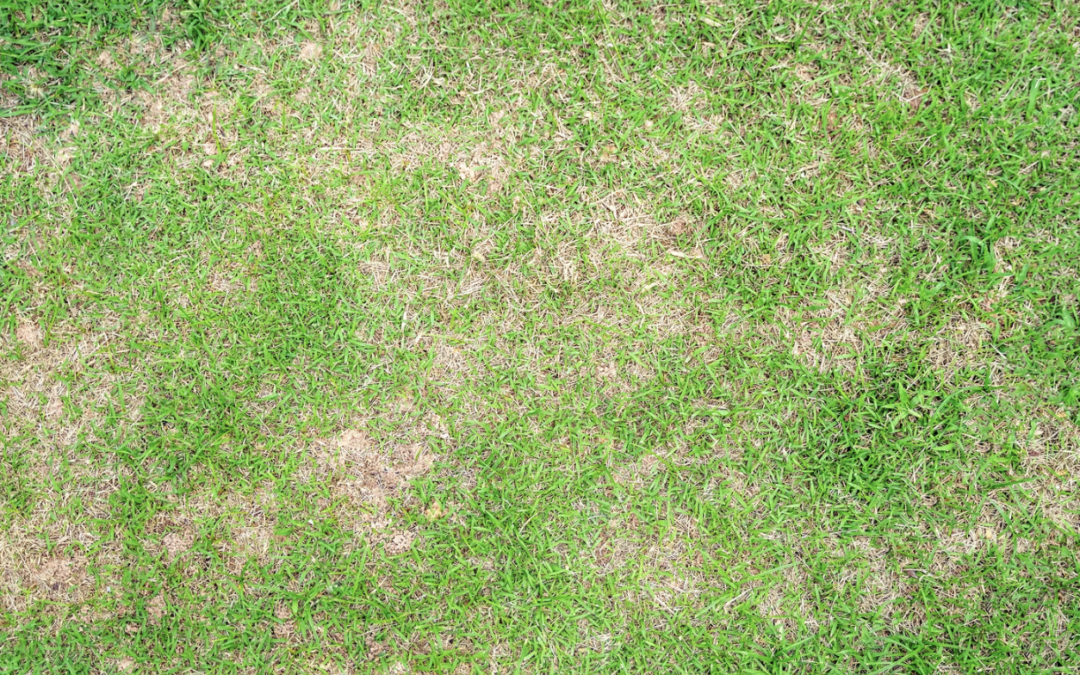Warm weather, humidity, and summer storms help your grass grow, but they also create the perfect environment for fungal lawn diseases. If you’ve noticed patches of dead grass, discolored blades, or strange orange dust on your shoes, your lawn may be under attack.
Here are three of the most common lawn diseases that appear in late spring and summer, and how to treat them.
1. Brown Patch Disease
What it looks like: Circular or irregular brown patches in your lawn.
Cause: The fungus Rhizoctonia solani, which thrives in hot, humid conditions—especially when lawns are over-fertilized or poorly drained.
What makes it worse:
- Excess nitrogen (often due to heavy thatch buildup)
- High heat and humidity
- Poor drainage
How to treat it:
- Dethatch your lawn to reduce nitrogen buildup
- Water less frequently, but more deeply
- For severe outbreaks, consider a fungicide treatment applied by our experienced lawn care technicians
2. Summer Patch Disease
What it looks like: Small patches of wilting or straw-colored grass that grow more irregular over time.
Cause: The fungus Magnaporthe poae, which flourishes in hot, dry conditions—especially in late summer.
What makes it worse:
- Shallow, frequent watering
- High nitrogen levels from thatch buildup
How to treat it:
- Adjust your watering schedule to deeper, less frequent watering
- Dethatch to reduce fungal growth
- Severe infections may require a professional fungicide application
3. Lawn Rust (a.k.a. the “Dorito Dust” Disease)
What it looks like: Orange or rust-colored dust on your grass—and on your shoes. It may look like your lawn was hit with a bag of extreme Doritos.
Cause: Fungi in the Puccinia genus. Lawn rust shows up most often in late summer when heat and humidity are high, and grass stays wet for too long.
What makes it worse:
- Prolonged moisture on grass blades
- Low nitrogen levels
- Poor airflow and compacted soil
How to treat it:
- Water early in the day so grass blades can dry
- Apply a nitrogen-rich fertilizer to improve grass strength
- Mow regularly to remove affected blades
- Severe outbreaks may require a fungicide application by our trained technicians
Don’t Let Lawn Diseases Take Over
While these are some of the most common lawn diseases in late spring and summer, they’re far from the only ones. Catching symptoms early is the key to preventing long-term damage.
At LawnCare Plus, our local lawn care professionals can diagnose and treat fungal lawn diseases before they get worse. If you’re seeing strange spots or thinning grass, give us a call or request a quote today. We’ll help your lawn look healthy, green, and disease-free all season long.

